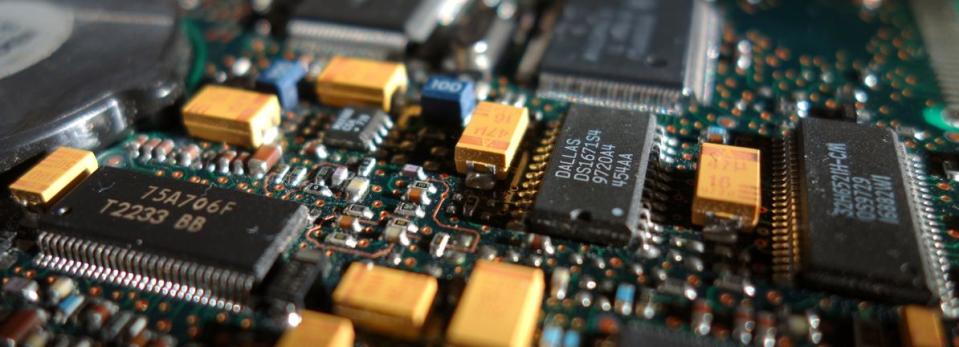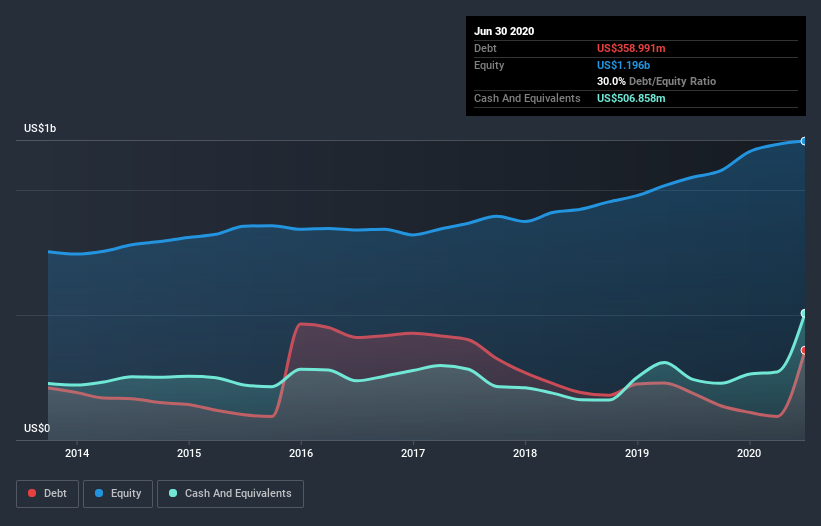Is Diodes (NASDAQ:DIOD) Using Too Much Debt?

David Iben put it well when he said, 'Volatility is not a risk we care about. What we care about is avoiding the permanent loss of capital.' So it might be obvious that you need to consider debt, when you think about how risky any given stock is, because too much debt can sink a company. We can see that Diodes Incorporated (NASDAQ:DIOD) does use debt in its business. But is this debt a concern to shareholders?
When Is Debt Dangerous?
Generally speaking, debt only becomes a real problem when a company can't easily pay it off, either by raising capital or with its own cash flow. In the worst case scenario, a company can go bankrupt if it cannot pay its creditors. However, a more usual (but still expensive) situation is where a company must dilute shareholders at a cheap share price simply to get debt under control. Having said that, the most common situation is where a company manages its debt reasonably well - and to its own advantage. When we examine debt levels, we first consider both cash and debt levels, together.
View our latest analysis for Diodes
What Is Diodes's Net Debt?
As you can see below, at the end of June 2020, Diodes had US$359.0m of debt, up from US$187.4m a year ago. Click the image for more detail. However, its balance sheet shows it holds US$506.9m in cash, so it actually has US$147.9m net cash.
How Healthy Is Diodes's Balance Sheet?
We can see from the most recent balance sheet that Diodes had liabilities of US$325.3m falling due within a year, and liabilities of US$416.2m due beyond that. Offsetting this, it had US$506.9m in cash and US$268.6m in receivables that were due within 12 months. So it actually has US$33.9m more liquid assets than total liabilities.
This state of affairs indicates that Diodes's balance sheet looks quite solid, as its total liabilities are just about equal to its liquid assets. So it's very unlikely that the US$2.68b company is short on cash, but still worth keeping an eye on the balance sheet. Succinctly put, Diodes boasts net cash, so it's fair to say it does not have a heavy debt load!
It is just as well that Diodes's load is not too heavy, because its EBIT was down 21% over the last year. Falling earnings (if the trend continues) could eventually make even modest debt quite risky. When analysing debt levels, the balance sheet is the obvious place to start. But ultimately the future profitability of the business will decide if Diodes can strengthen its balance sheet over time. So if you want to see what the professionals think, you might find this free report on analyst profit forecasts to be interesting.
But our final consideration is also important, because a company cannot pay debt with paper profits; it needs cold hard cash. Diodes may have net cash on the balance sheet, but it is still interesting to look at how well the business converts its earnings before interest and tax (EBIT) to free cash flow, because that will influence both its need for, and its capacity to manage debt. Over the most recent three years, Diodes recorded free cash flow worth 75% of its EBIT, which is around normal, given free cash flow excludes interest and tax. This cold hard cash means it can reduce its debt when it wants to.
Summing up
While it is always sensible to investigate a company's debt, in this case Diodes has US$147.9m in net cash and a decent-looking balance sheet. And it impressed us with free cash flow of US$127m, being 75% of its EBIT. So we don't have any problem with Diodes's use of debt. When analysing debt levels, the balance sheet is the obvious place to start. However, not all investment risk resides within the balance sheet - far from it. Consider risks, for instance. Every company has them, and we've spotted 1 warning sign for Diodes you should know about.
When all is said and done, sometimes its easier to focus on companies that don't even need debt. Readers can access a list of growth stocks with zero net debt 100% free, right now.
This article by Simply Wall St is general in nature. It does not constitute a recommendation to buy or sell any stock, and does not take account of your objectives, or your financial situation. We aim to bring you long-term focused analysis driven by fundamental data. Note that our analysis may not factor in the latest price-sensitive company announcements or qualitative material. Simply Wall St has no position in any stocks mentioned.
Have feedback on this article? Concerned about the content? Get in touch with us directly. Alternatively, email editorial-team@simplywallst.com.

 Yahoo Finance
Yahoo Finance 
